Distance 0.6 mile loop
Elevation gain: 40 feet
Pothole Point
Pothole Point is an easy trail offering the highest views right off the main road, and is one of the best places to enjoy a sunset in the Needles District. The loop is marked with cairns on top of slickrock. Kids enjoy playing on the boulders at the top of the loop.
Canyonlands National Park - Needles District
The parking area is on the left off the paved scenic road as it gets close to the end at Big Spring Canyon Overlook.
Access:
The rock surface along Pothole Point Trail is composed of sand grains deposited by oceans and wind. Over millions of years these sand grains became cemented together to form the Cedar Mesa Sandstone. Because this rock is not uniform in the way it was laid down or in the strength of its cementing material, it has not eroded evenly. Depressions called potholes have formed. Once started, a pothole continues to grow larger. It becomes a trap for windblown sand grains and pebbles which scour the surface deeper. Rainwater, which normally contains a weak carbonic acid, collects in the depression and continues to dissolve the cementing material. Temporary pools created by rainwater collecting in potholes are welcomed by birds, mammals and reptiles. Less obvious forms of life depend on this water too. When conditions are right, you can see many tiny creatures in the murky puddles.
So what is a pothole?
Enjoy watching pothole life from pool edges. Never put your fingers, hands or feet into the water. Each pothole is a complete ecosystem. Plants and animals spend their entire lives within this miniature world of water. Oils from human skin, lotions or sunscreen pollute these water sources and make them uninhabitable. Help protect these precious life-giving pools.
Pothole Etiquette
Pothole creatures have adapted to extended periods of dryness punctuated by brief wet periods. During hot, dry times of the year when ground surface temperatures may exceed 170 degrees, pothole life seems to cease; however, lying dormant within the cracked mud are hundreds of microscopic eggs that tolerate dryness well. Their hard, dark-colored shells protect them from intense sunlight and breakage. Although most pothole animals survive as eggs, a few, such as snails, are able to withstand dry periods as adults. By sealing themselves inside their shells, snails can avoid desiccation until the next rain. Early spring and late summer usually bring rain to the desert and water to the potholes. Within hours eggs hatch and within days life becomes visible. Crustaceans, tadpoles, worms and insects coexist in a world bounded by the waters edge. Spadefoot and red-spotted toads seek potholes as sources of water for reproduction. Larger animals find relief from the heat in pothole water.
Pothole Life
Potholes trap sand and particles of organic matter as well as moisture. Over time enough soil may fill a pothole to enable plants to grow. Often the first growth to appear is biological soil crust, a lumpy, dark-brown crust that is a living community of simple plants algae, moss, fungi, lichen and cyanobacteria. This crust helps keep the soil from eroding and enriches it with nitrogen and carbon. As the amount and quality of the soil increases, grasses, herbs, and eventually yucca and other larger plants, including small trees, can grow creating gardens on the slickrock. Biological soil crust grows slowly and is very fragile. Walk on the trail or on rock to avoid trampling it.
Pothole Gardens
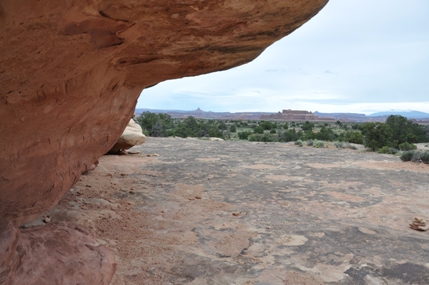
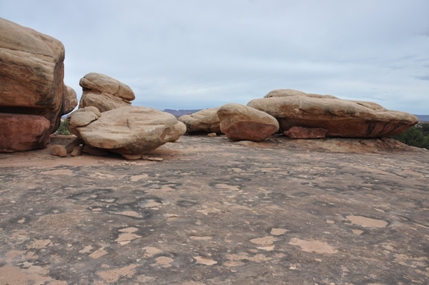
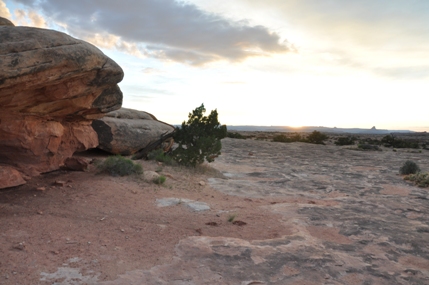
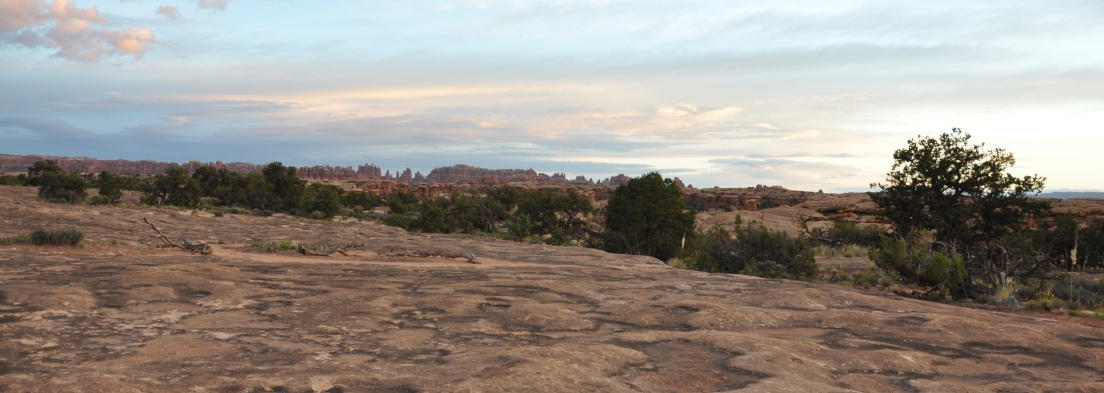
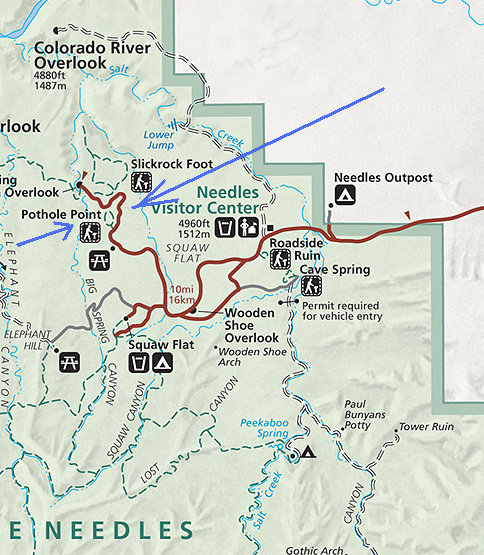
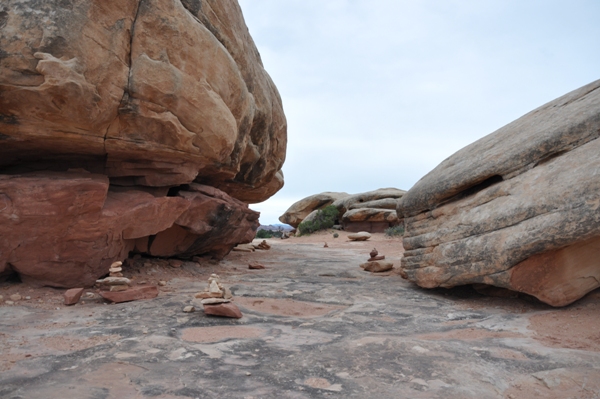
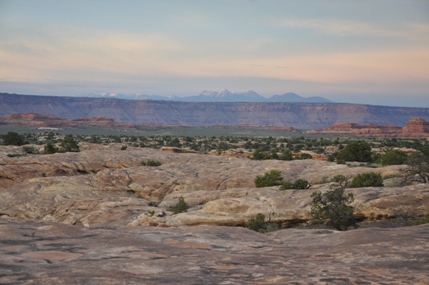
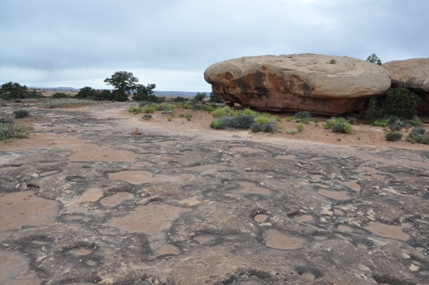
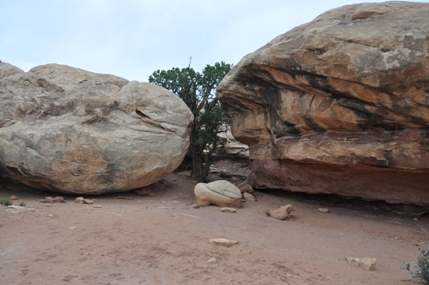
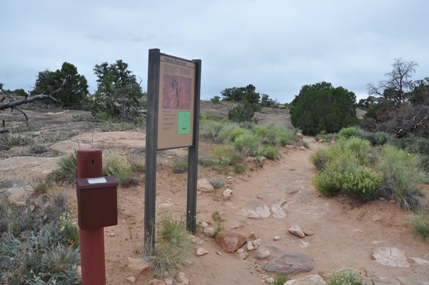
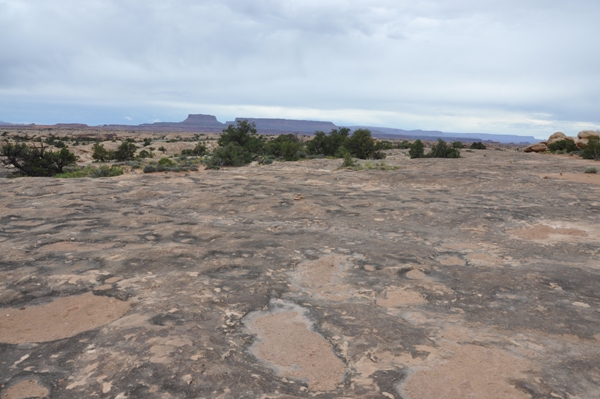
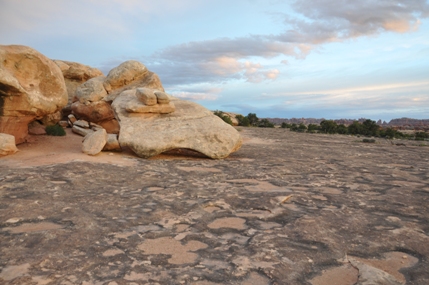
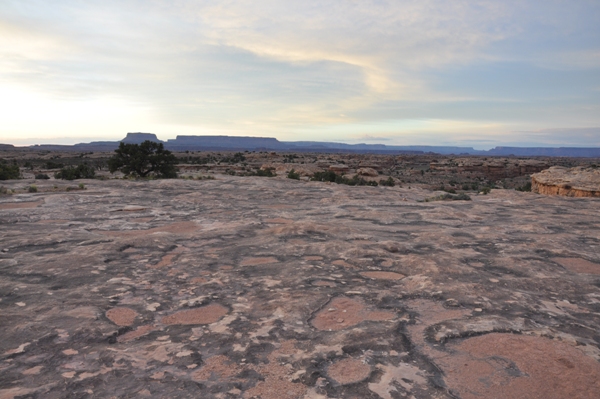
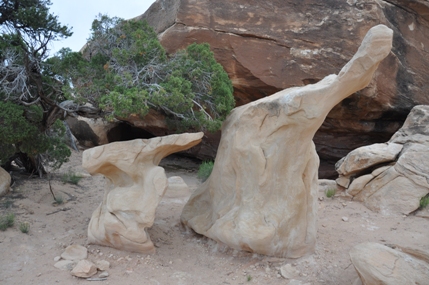
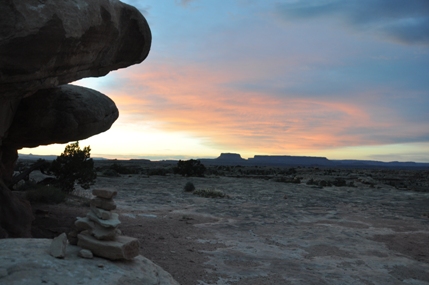
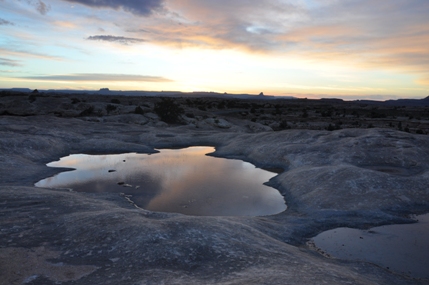
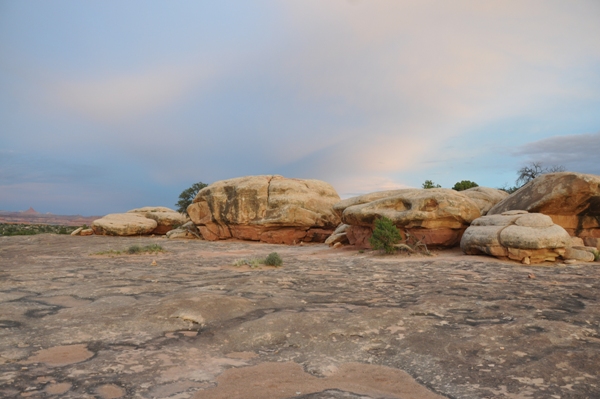
Below: The Needles from Pothole Point
Water in a pothole
Follow the cairns
Evening light out to Sky Island & Junction Butte
La Sal Mountains near Moab
















